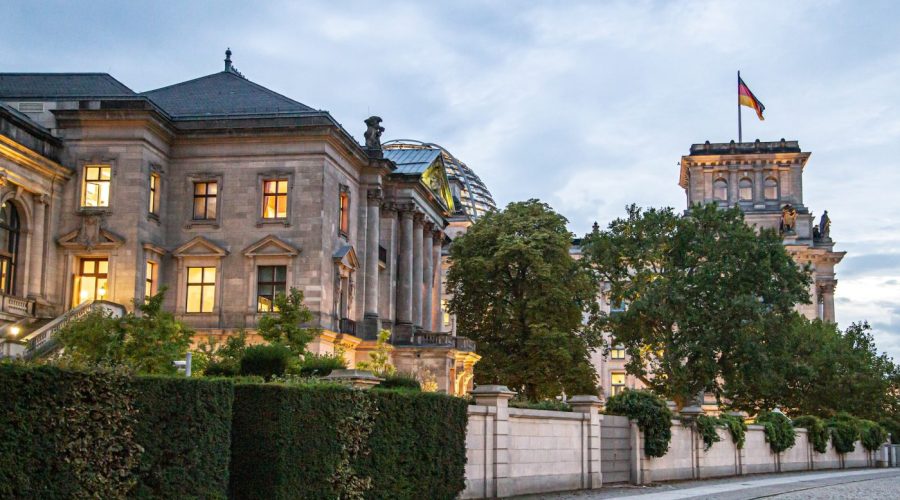What are the World Heritage Sites in Berlin, Germany?
Speaking of history, stunning architecture, and cultural importance, Berlin is a city that is a goldmine for such people. This lively city offers a great number ofworld heritage list sites that one can visit and advert to the belonging of Germany to the list of unique countries with invaluable history. In this blog post, the author aims to present the wealth of the World Heritage Sites in Berlin and the history involved.
1. Museum Island
Museum Island or Museumsinsel is a peninsula situated in the middle of Berlin being one of the city’s largest districts. This site is one of the UNESCO world heritage sites that hosts five prominent museums with their different stylistic displays.
The five museums are:
Pergamon Museum: Consist of sculptures ephemerals, portal, the Royal Gate of Babylonian, the palace of gliding and the most famous work of art Pergamon Altar.
The Neues Museum: Renowned for its iconic bust of Queen Nefertiti and Egyptian artifacts.
The Altes Museum: Exhibiting a fascinating collection of classical antiquities.
State’s oldest museum The Alte Nationalgalerie focuses on the 19th century: The gallery has the collections of the Romantic, Impressionist, and Biedermeier art works.
The Bode Museum: Provides shelter to an extensive sculpture collection and Byzantine art.
Museum Island offers you to meet a great historical and world’s art tour, where you can see the variety of cultural heritage.
2. Berlin Modernism Housing Estates
The Berlin Modernism Housing Estates are uniquely identifiable with Modernist principles of architecture and reveal original methods of designing rooms for urban masses in the initial term of the twentieth century. These estates were created during 1913-1934 and, both in terms of architectural design and social models, their impact had a paramount influence on the creation of the modern city.
Some notable housing estates include:
Gartenstadt Falkenberg: Designed by Bruno Taut, this housing estate showcases colorful and affordable housing with green spaces.
Hufeisensiedlung: With the appearance of a horseshoe, this estate by Bruno Taut and Martin Wagner provides socially affordable living and services.
Weiße Stadt: This estate designed by Otto Rudolf Salvisberg, was built with this name the “White City” as a combination of modern structures with gardens and terraces.
Siedlung Schillerpark: This estate has been developed due to the Garden City movement with the aim of offering people low-cost living in environment-friendly surroundings with more open spaces.
Visiting these places today allows someone to get a feel of what social housing was and the designs that were put in place to try and improve living standards of the working class.
3. Palaces and Parks of Potsdam and Berlin
The region which is referred by the title Palaces and Parks of Potsdam and Berlin is vast covering numerous gardens, palaces, as well as cultural spots. This site contains some of the best architectural features of Royal Prussian architecture and scenic landscapes.
Highlights of this site include:
Sanssouci Palace: This palace was built for Frederick the Great and the palace is enclosed by an elaborated garden.
New Palace: This astonishing palace is the largest palace existing in Sanssouci Park and the building represents one of the best Baroque architecture.
Sanssouci Palace: Among other buildings of the Royal Residence this Neoclassical palace is something special.
Babelsberg Palace: Situated amidst a picturesque park, this palace showcases a blend of Gothic and Renaissance architectural styles.
You will also be able to see the grandeur of royal families at the Palaces and Parks of Potsdam and include the beauty of nature into your impressions by visiting Berlin.
4. Berlin Wall
The Berlin Wall fell away physically long time ago but it is still one of the most defining landmarks in the world now. It is an embodiment of the separation as well as the unity of Germany hence has been awarded a place of the world heritage site.
Unfortunately, the wall is not still present end to end, but some parts can still be viewed, for example, there is East Side Gallery. This area of the wall opened to the street art and is covered with paintings of freedom and peace of different artists.
Visiting the Berlin Wall helps to understand a piece of history and to enjoy the harmony of the city that was once separated.
5. Modernist Housing Estates
The modernist housing estates in Berlin include the Modernist Districts of Berlin (also known as the World Heritage sites) were built between 1919 and 1933. It is associated with a particular trend of movement in urban multi story housing structure that focuses on forms of utility and social emancipation.
Some notable housing estates include:
Weiße Stadt: An example of the functionalism and the “New Objectivity” movement
Friendship: The primary objective of ‘Grüne Stadt’ is focused on designing the green spaces and introducing sense of togetherness.
Siedlung Britz: Designed with an emphasis on natural lighting and improved quality of life.
These estates represent ideas of modernist architecture for the refined life of the new urban man and top-notch architectural ideas that reflective of the post-Industrial Revolution advancements towards the twentieth century.
Conclusion
Every part of Berlin presents tourism interest due to history, arts and architecture features depicted in different World Heritage Sites. Starting from the famous Museum Island to the symbol of the Cold War namely the Berlin Wall, each place automatically offers historical, social, as well as cultural insight of Germany and Germany alone. Visiting these sites will definitely make you gain a better understanding and admiration of the diverse culture possessed by Berlin, Germany.
So, why wait? It is now the right time to plan a visit to these wondrous World Heritage sites and be transported to a different era and learn about different cultures.
Table of Contents



